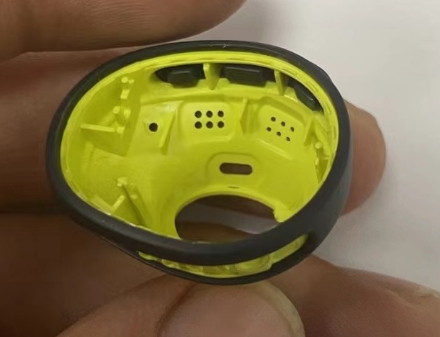Study on the shrinkage of injection molding process 123 Shenzhen Donglai Precision Mold Co., Ltd
Plastic shrinkage is the percentage of the difference between the size of plastic products in the mold under high heat environment and that under room temperature cooling environment. Different plastic materials have slightly different shrinkage rates. For example, the shrinkage of polyethylene (PE) is 1.5% -3%, that of polypropylene (PP) is 1.6% -2.0%, and that of acrylonitrile butadiene styrene (ABS) is in the range of 0.4% -0.8%. The injection molding factory has conducted a detailed study on the shrinkage of the plastic injection molding process, and applied these data to the mold design to produce products with more precise dimensions, so that the majority of the colleagues of the injection molding factory have a deeper understanding of the shrinkage.
The shrinkage rate of plastics is affected by many factors, including the variety of plastics, the characteristics of plastic parts, the form of feed port and molding conditions.

1. During the molding process of thermoplastic, there are many factors such as the volume change caused by crystallization, strong internal stress, large residual stress and strong molecular orientation, so its shrinkage rate is usually large, wide range and obvious directionality. In contrast, the shrinkage rate after molding, annealing or moisture conditioning treatment is usually larger than that of thermosetting plastics.
2. The properties of plastic parts will also affect the shrinkage. During the molding process, the molten material will immediately cool down after contacting with the cavity surface to form a low-density solid shell, while the poor thermal conductivity of the plastic will lead to the slow cooling of the inner layer of the plastic part and the formation of a high-density solid layer with large shrinkage. Therefore, plastic parts with large wall thickness, slow cooling rate and thick high-density layer usually have large shrinkage.
3. The form, size and distribution of the feed inlet also directly affect the material flow direction, density distribution, pressure maintaining feeding effect and molding time. Direct inlets and large-size inlets (especially thicker ones) usually lead to smaller shrinkage but greater directionality, while wide and short inlets have smaller directionality. The situation that the feed inlet is close to or parallel to the direction of material flow will lead to large shrinkage.
4. Molding conditions also affect shrinkage. High mold temperature, slow cooling of molten material and high density will lead to large shrinkage, especially for crystalline material, due to its high crystallinity and large volume change, its shrinkage is larger. Mold temperature distribution, internal and external cooling of plastic parts and density uniformity will also affect the shrinkage rate, directly affecting the shrinkage amount and direction of each part.
The shrinkage rate of the injection molding process, the injection molding factory conducts in-depth research on the shrinkage rate of the plastic injection molding process, and applies these research results to the mold design, so as to produce more precise plastic products. These efforts not only improve the product quality, but also promote the development of the injection molding industry, so that industry practitioners have a deeper understanding and understanding of plastic shrinkage.

Thank you for your sharing. I am worried that I lack creative ideas. It is your article that makes me full of hope. Thank you. But, I have a question, can you help me?
Requesting a reward, your tipping is my motivation
https://paypal.me/molddl?country.x=C2&locale.x=zh_XC
Your point of view caught my eye and was very interesting. Thanks. I have a question for you.
Requesting a reward, your tipping is my motivation
https://paypal.me/molddl?country.x=C2&locale.x=zh_XC